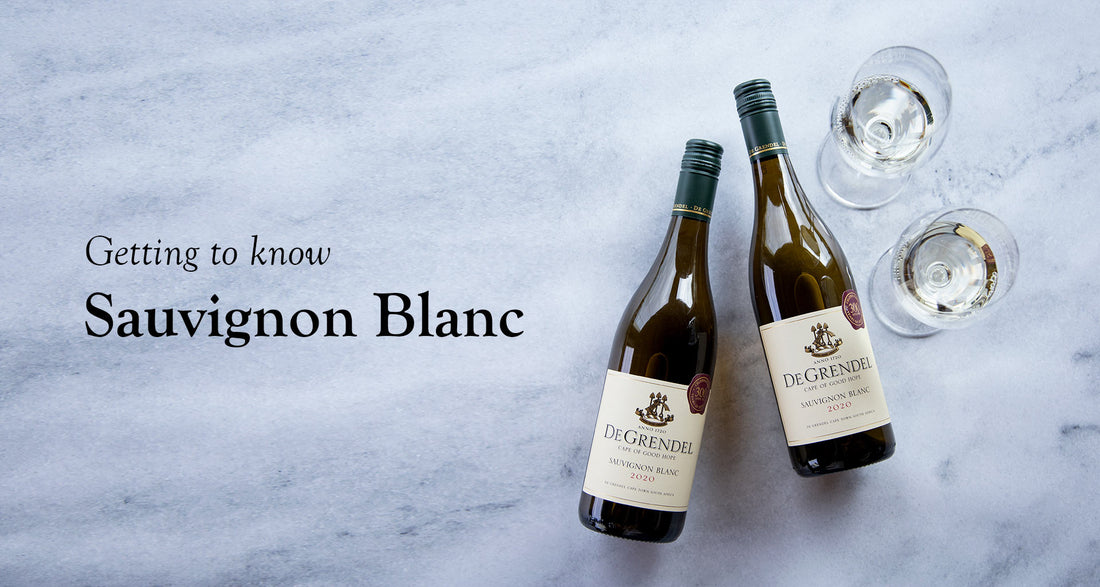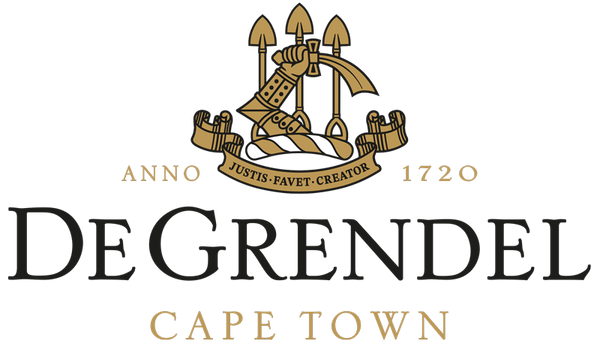
Getting to Know Sauvignon Blanc Up Close and Personal
Share
For all the right reasons, Sauvignon Blanc remains South Africa’s most loved white varietal wine, and rightly so. To start with, it is probably one of the greatest quaffers for our warm climate.
Here are 20 interesting facts about this beloved grape that you should know, which will make for interesting wine conversation at your next dinner party.
20 Interesting Facts about Sauvignon Blanc
- Extensively planted in the Cape from the beginning of the 20th century, Sauvignon Blanc vines were uprooted in the 1940’s because of poor plant material. Replanting started in the late 1970’s. By 1980, just 0,2% of Cape vineyards were planted with this variety, but today Sauvignon Blanc accounts for more than 10% of total plantings.
- Sauvignon Blanc originates from France and in Bordeaux it is often blended with Semillon, referred to as a white Bordeaux blend.
- In France, Sancerre is perhaps the most famous appellation for Sauvignon Blanc – it can produce extremely attractive, bone-dry and lemony wines, while nearby Pouilly-Fumé wines are known for their mineral, slightly smoky notes (think gun-flint).
- The best Sauvignons are grown in relatively cool climate vineyards, so the grapes retain their crisp acidity rather than turning them flabby. Think about the lovely cool climate of De Grendel in Durbanville on the slopes of the Tygerberg which overlooks to the Atlantic Ocean.
- Synonyms for Sauvignon Blanc include Blanc Fumé or Fumé Blanc, which is often referred to in the New World as an oaked Sauvignon Blanc, although this term is not readily being used in South Africa.
- Sauvignon is very prone to rot, especially botrytis, if grown in fertile soils, as the bunches are then very compact. Some of the best Noble Late Harvest wines are made from Sauvignon Blanc grapes. In France, a sweet Sauvignon Blanc affected by noble rot is called a Sauternes and Château d'Yquem is probably the most well-known producer of Sauternes.
- De Grendel scooped an FNB Top 10 Sauvignon Blanc award for their Sauvignon Blanc in 2022.
- Centuries ago, in some sunny vineyard in France, Sauvignon Blanc met up with Cabernet Franc. The two crossed and it was, well, magic: they created Cabernet Sauvignon.
- Of all the white wines, Sauvignon Blanc is the most herby and vegetal. This character comes from the methoxypyrazines in Sauvignon Blanc, and this component is also quite high in Cabernet Sauvignon. Three methoxypyrazines have been identified and their aroma descriptors include green capsicum, green bell peppers, herbaceous, tomato leaf, earthy, grassy, peas and asparagus. Methoxypyrazines are mostly found in the grape skins (approximately 95%) and concentrations decrease with grape ripening.
- The first Friday in May is International Sauvignon Blanc day, and will be celebrated across the globe on May 5th in 2023. The official hashtag is #SauvBlancDay.

- Sauvignon is the 3rd most planted white wine grape variety in South Africa, after Chenin Blanc in first place and Colombar in second place.
- It is the most-consumed varietal wine in South Africa. More than 24 million bottles of Sauvignon Blanc are enjoyed on the local market annually.
- Sauvignon Blanc is one of South Africa’s Big 6. Just as the wildlife industry has the Big Five, the South African wine industry boasts the Big Six, which refers to the cultivars Sauvignon Blanc, Pinotage, Shiraz, Cabernet Sauvignon, Merlot and Chardonnay.
- It’s very easy to match to food. Just remember that it pairs beautifully with anything you would squeeze lemon on. Cold seafood platter? Check. Grilled fish? Check. Roast veggies? Check. It is also terrific with Gruyere cheese or ripe goat’s cheese and anything garlicky.
- Sauvignon has a wild side. It requires a lot of hands-on vineyard work to keep this vigorous vine from growing out of control. Sauvignon Blanc in French means ‘wild white’.
- It is known as ‘Feigentraube’ in Germany, ‘Muskat Silvaner’ in Austria, ‘Sauvignon’ in Cyprus, Portugal, Italy, Czech Republic, Slovakia and Slovania and ‘Sauvignon Gros’ in Romania.
- In South Africa, we have 9,878 ha under Sauvignon Blanc vineyards. This accounts for almost 20% of all white grape plantings and comprises a total of 28 270 180 vines (more than 20 million!)
- In South Africa, we have an entire association dedicated to Sauvignon Blanc, which fosters excellence in making and marketing South African Sauvignon Blanc locally and internationally. Visit their website www.sauvignonblanc.com
- The first varietal Sauvignon on the market was that of Verdun (now Asara) in 1977, with Backsberg in Paarl and De Wetshof in Robertson joining in 1980. The oldest Sauvignon vineyards are at Spice Route, planted in 1965, and at Bloemendal, planted somewhere in the early 1970s.
- Sauvignon Blanc performs well in areas such as Darling in the West Coast, Durbanville close to Cape Town, Cederberg which is situated 1,100 m above sea level, Elim at the Southernmost tip of Africa, and even in regions such as Stellenbosch and Robertson.
READ ALSO: De Grendel's Three Styles of Sauvignon Blanc

Sources:
Platter’s Wine Guide; Wine (Atkins, S.); Vines Grape and Wines (Robinson, J.); New World of Wine from the Cape of Good Hope (Hands, P. & Hughes, D.); The Complete Book of South African Wine (Kench, J. et al); Wineland; The Australian Wine Research Institute; SAWIS; Sauvignon Blanc SA.
